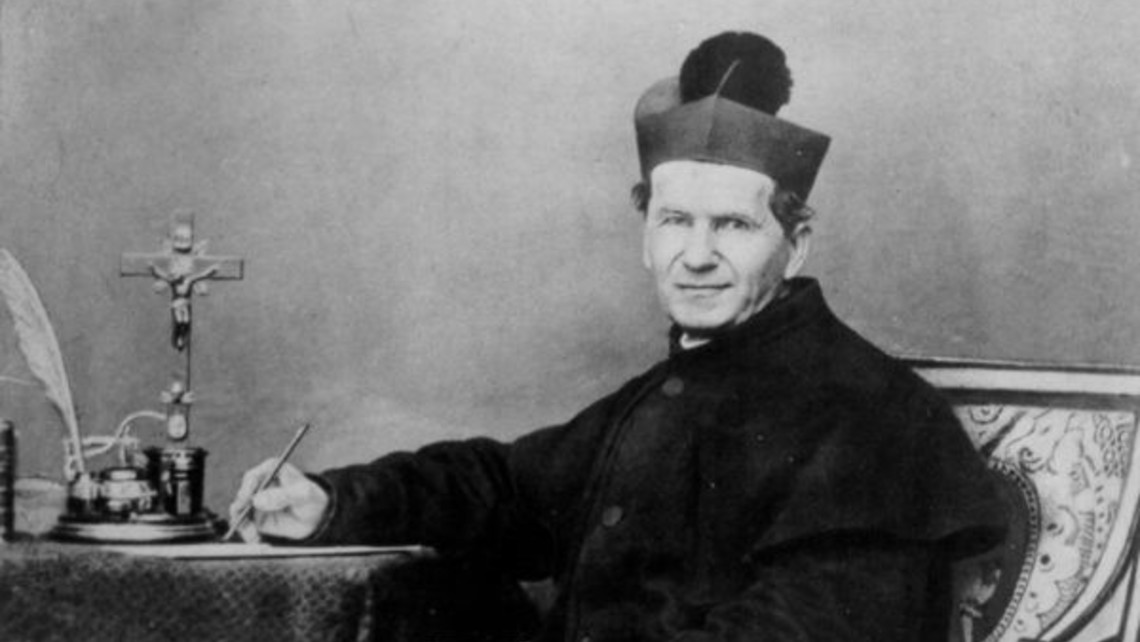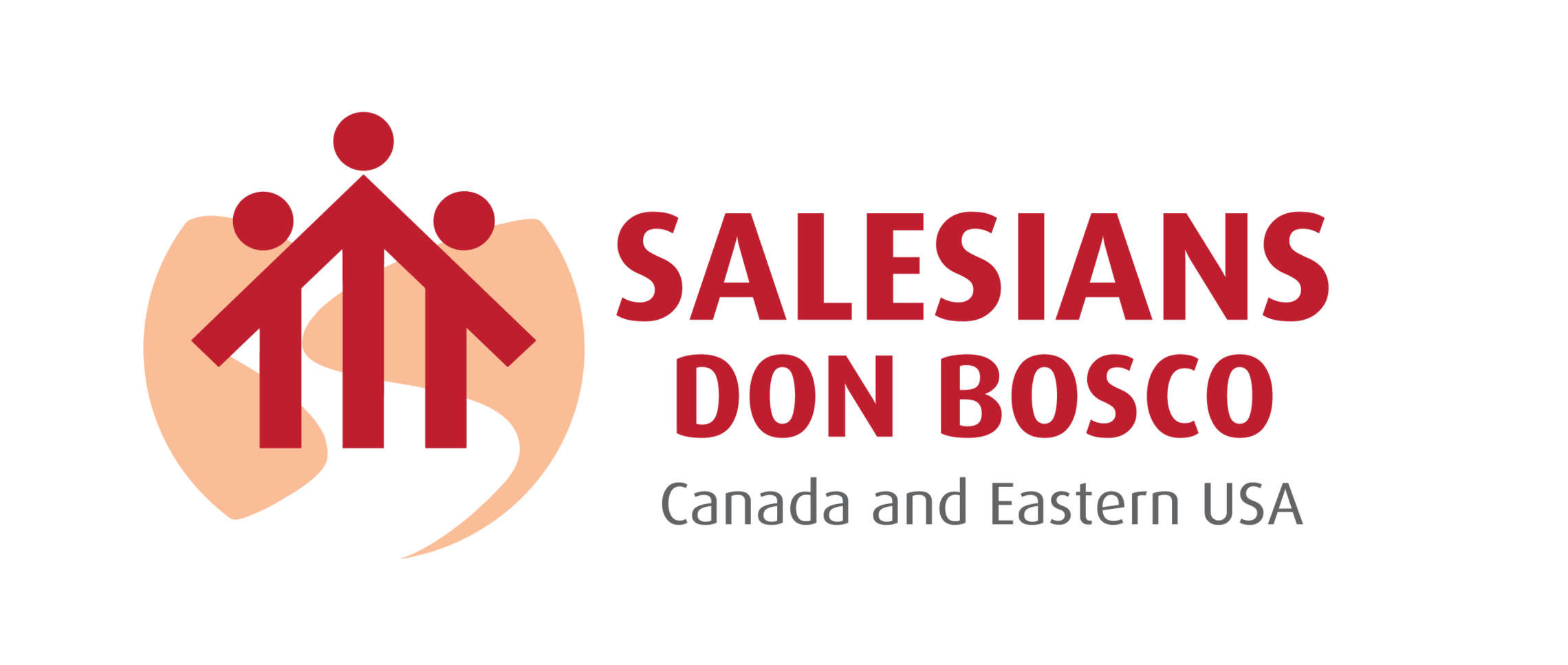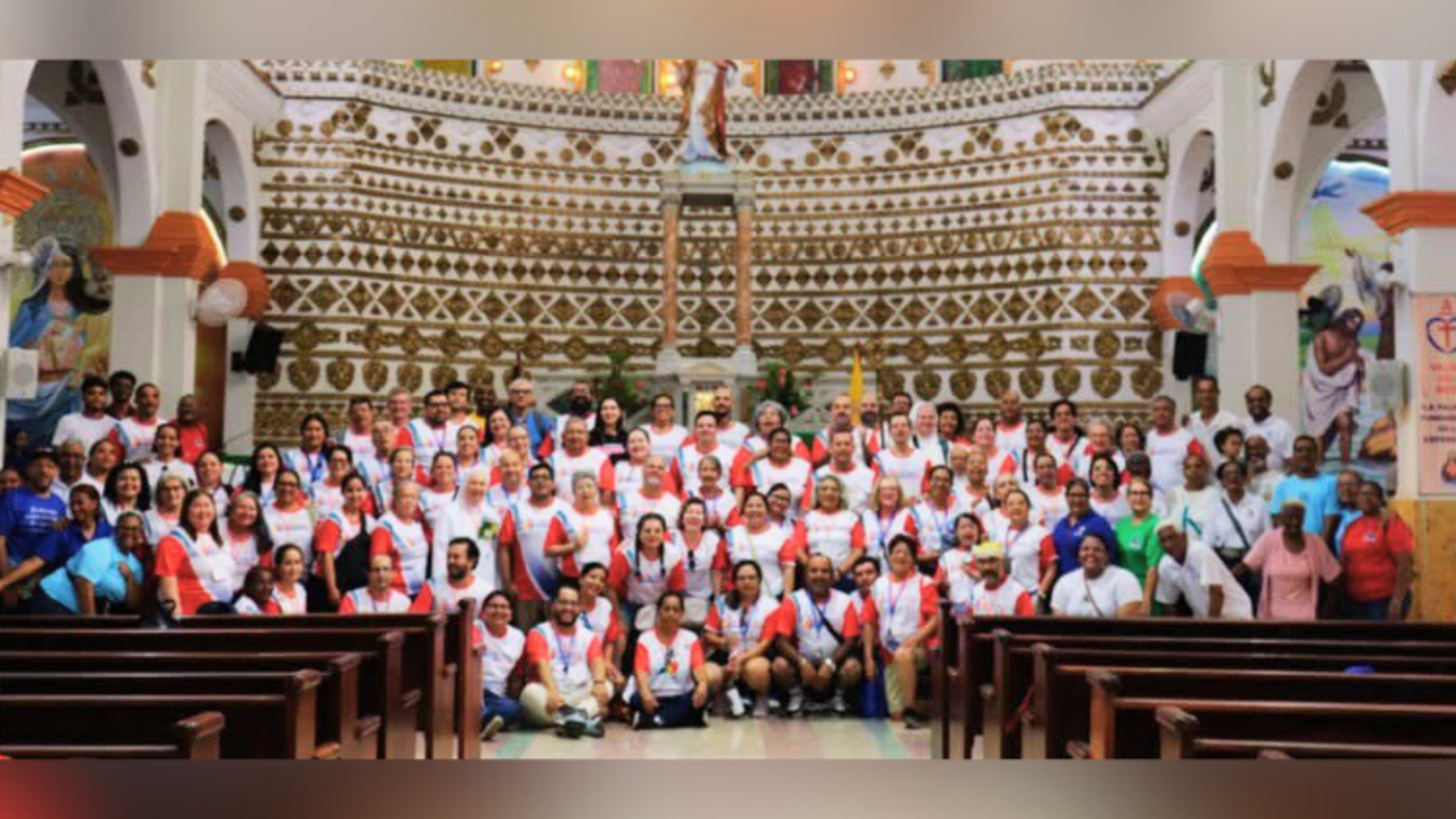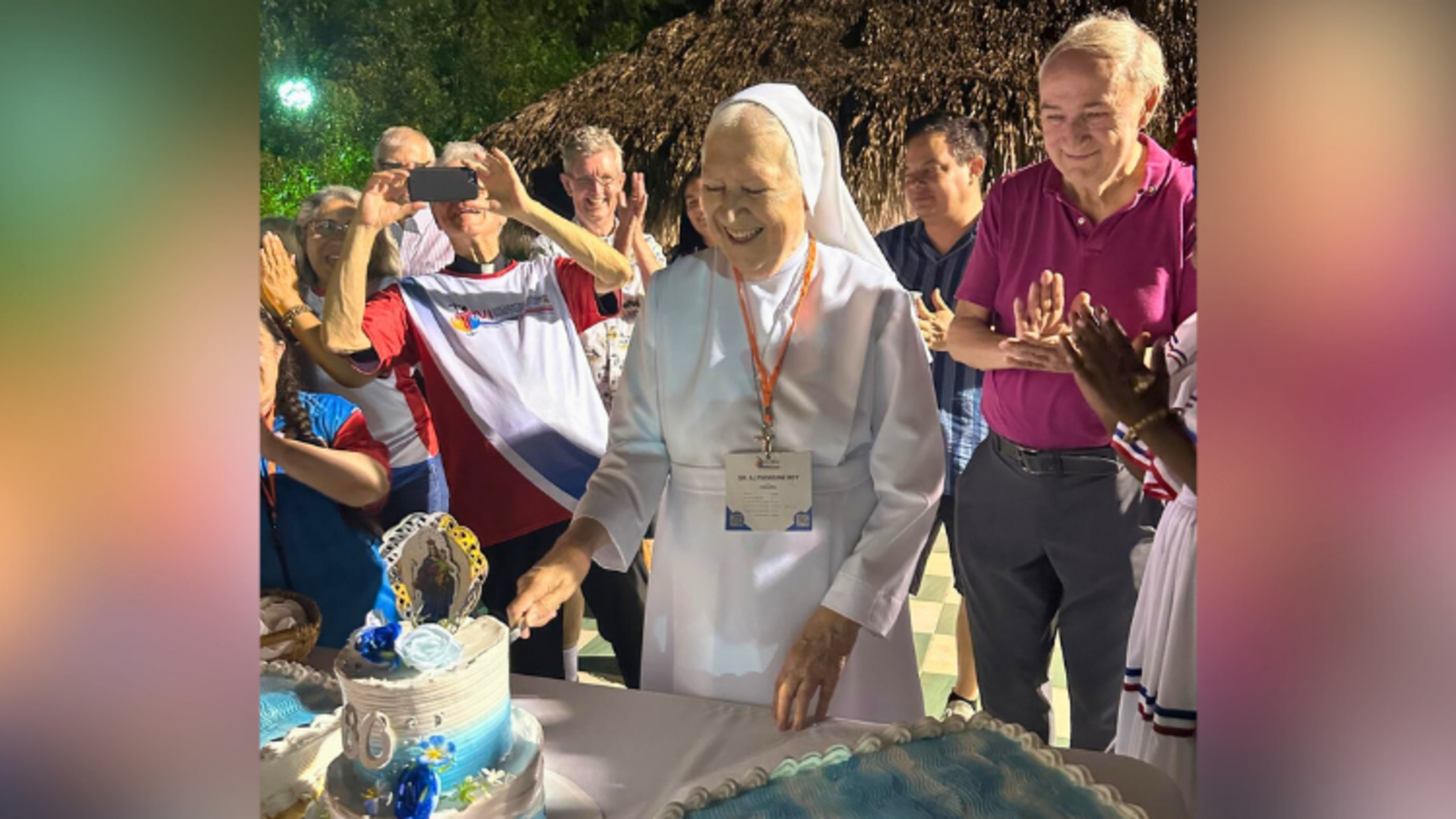
By Jakeline Magalhães, with the collaboration of Fr. Tim Zak
In his message in the Congregation’s Communications Newsletter of February 2018, Fr. Filiberto Gonzalez, the general councilor for communications of the Salesians of Don Bosco, wrote:
Communication is a divine-human fact that touches the core of God and of man. In our human reality, it begins with welcoming in the womb, and continues in the family, in groups of friends, in school, in work, in the religious community, also in the educational-pastoral community. All this has to do with our fraternal and pastoral communication, which is really social. If communication arises from the encounter between people and has the aim to create a culture of encounter, then we do not put the media, the technologies, in the first place, but the desire and the will to find others to live in the image of God.
Fr. Filiberto’s insights can help form our perspectives and establish a foundation that will guide our plans and actions: when we think about communications, we need to put God and people in the center, not the media and technology. Of course, they are important too, a part of our process of inculturation, education, and evangelization, but they are not our priority. Communication “has the aim to create a culture of encounter.”
For us Salesians, this means listening to young people today and understanding how they think, how they live, what are their hopes and dreams, their anxieties and fears. Much of their experience of life is connected to social media, the internet, the digital continent. Their brains organize ideas in ways that differ from how previous generations functioned; their feelings can be expressed and interpreted in manners that seem foreign to their elders. Adults enter this digital world as outsiders; to understand those who inhabit this world, we need to be open to experience new technologies and languages, to understand how they interact and how to use them to connect with the young. We do not need to master anything (unless we really want to); we do not need to be the ones who will teach the young how to use these modern tools and apps; we won’t teach them how to live their culture. Adults do have an irreplaceable role to play, however, in the complete human development of the young. Rather than be teachers of technology for the young, we need to touch their hearts and souls, to help them grow as human beings and children of God (good citizens and good Christians). This is our priority, as it was for Don Bosco. We can work toward this goal with ways in which we have always done ministry; we can form relationships that are very mature and speak a language that adults are comfortable with, but for sure, these traditional methods of education and evangelization will become more effective if we are able to renew them with a fresh mindset and perspective. Now communication can really happen!
We cannot forget that, from its origins, communication is part of the Salesian identity and mission. Fr. Filiberto highlights this in many talks and documents, as in the message in the Communications Newsletter of June 2017:
The charismatic identity, the birth of the Congregation, and the testimony of Don Bosco as a point of departure for Salesian communication are the first things that I always underline. In Valdocco, we were born because of God’s initiative and for the salvation of the young. Our father was an evangelist, educator, and communicator. It is a historical-charismatic fact that is irrefutable and irrevocable. For this reason, communication is a matter of being and not just doing. It is a vocation for Salesians and laypeople for a youthful and popular mission. It is not based on having or not having the means, but on being Salesians who are among the young, with an experience of Christ as the content, using the local media, and learning the current youth and media languages that allow us to communicate an experience of God which the vast majority of communications does not offer. That is our contribution to society.
We need to be clear that the Salesian identity and mission is our starting point as we move forward, and then think about the place of communication in our local Salesian presences.
System Mentality and Networking
Seven years ago, in 2011, the Congregation launched the second edition of the Salesian Social Communication System (SSCS): Guidelines for the Salesian Congregation. I have noticed that this document is still largely unknown for the majority of the Salesians of our province and also for laypeople involved in our works. I would like to suggest that this short book would make great summer reading. You can download it for free at www.sdb.org.
The document clarifies the vision and mission, objectives, and policies for communications in Salesian settings. It presents common criteria and languages, roles, organization, and functions. These guidelines for the Salesian Congregation provide a view of communications as a unique “ecosystem,” that is a dynamic, harmonious, and flexible interaction where we communicate more by who we are than by what we say, and where all variables, especially the environment that we create, matter. The quality of communication in a specific context is guaranteed by a plurality of interacting factors. In other words, our communication is better when a number of factors are all working in sync.
Beyond the local Salesian presence, this perspective can be applied at all different levels of organization and brings us together as part of a network in which we interact in a systemic and systematic way.
The Salesian Congregation feels the importance of working with coordination and unity (which is different from unification), among all the sectors: communications, youth ministry (including vocations), mission animation, Salesian Family, and formation. This was the call of General Chapter 26, asking us to look for new means of living and organizing our works, so as to foster the same mission and spirit.
But more than this, as the Salesian Social Communications System says in n. 33: “To work systematically means working with a shared vision, in alignment with the Church and the Congregation, with integrated policies and projects at various levels, sectors well-articulated; it means certain work approaches, involving people, networking among ourselves and with other institutions in society who share the same mission. Openness to teamwork and partnership is a guideline for life inherent to our project and organization as a Congregation, a Family and a Salesian Movement.”
Our Challenges
I think that in our province we find Salesian spirituality alive, with amazing works for young people and families. It is important to recognize the vibrancy of the province and the local Salesian presences.
I also think, however, that the communications sector has been somewhat neglected. In context, this is part of a bigger challenge. As with most organizations, I see that the province has many strengths, while still needing to grow in some aspects. I see that the province leaders are making great efforts to help all the Salesian presences have a clear Salesian identity and mission. At the same time, it is important that each presence is not seen as isolated, but has a sense of belonging to the province, the region, and the Congregation. Communications can strengthen the community at every level and move us toward greater communion.
The more that we are aware that we are part of a province and the Congregation, the more we keep in mind the priorities of the province, translating these priorities into concrete actions. The province educational-pastoral plan becomes evident in our local SEPPs. We all recognize the successor of Don Bosco, the Rector Major, as the point of reference for the Salesian Family, a father, and center of unity. We read his messages, watch his videos, and follow his direction. We give due importance to the strenna, a unique Salesian tradition that guides (or should guide) the annual plans, for example by suggesting themes for conferences and spirituality days, as well as many of our programs and projects during the year. We take part in the various meetings of the Interamerica Region (youth ministry, mission animation, communications, formation, treasurers, provincials, etc.). We share the Salesian charism with the local Church and society, working collaboratively especially in areas that affect the lives of the young. We value the importance of communication for the development of our shared mission and include communications as an essential element of the Salesian mission, not only as a means of institutional advancement. All these and many more steps are important on this journey toward creating a culture of encounter which the province already has begun together with the Congregation and the Church.
At the personal and community level, we all need to try to be good communicators, having Don Bosco as our inspiration and example. He exemplifies the standards and principles of communications outlined in Salesian documents and mentioned briefly here. As we know, communicating is much more than transmitting content.
The term communication refers to people involved in interpersonal and group relationships, but also to a cultural and social environment that involves everyone in a network, with considerable mediation of tools and technologies. Intrinsic to the sense of the word communication are values like reciprocity, participation, giving, and taking. This is why we can say that everyone involved in the communication process is a subject of “social” communication. (SSCS, n. 16)
This emphasis on the centrality of the person and the social dimension of communication will reflect directly in our institutional communication. We all need to be good communicators—it is part of our mission—but we do not necessarily need to be professionals in communications. Although we may not be professionals, we value the importance of involving someone who really understands this field who will help the educational-pastoral community to be a well-functioning “ecosystem” at the institutional level. The involvement of someone trained in communications is not a distraction to the mission or a waste of resources, but an effective means of staying connected to our Salesian roots (we could say that Don Bosco was a communications expert) and to our charism, that is, our “reason for being.”
We are a well-known Congregation with credibility and a clear mission and purpose, but sometimes the way we communicate in the local presences and the image we project to the local Church and society do not match the worldwide reality. There can be confusion about who we are or what we do as a Salesian school, parish, youth center, or any other kind of Salesian project.
Based on my previous experience of Salesian works in Brazil, my interactions with the Salesian presences in my first year in the USA, and listening to stories from other delegates from around the world, I would like to offer some observations about Salesian communications, together with a few examples of what happens when we do not think seriously about communications. Overlooking the small details can have unwanted consequences at any level in our educational-pastoral community.
Sometimes, as institutions, we are not present in social media, or we have such accounts but manage them in a disorganized and unplanned way. One institution may have multiple accounts for different departments or groups, and these groups don’t communicate with each other. We can ask ourselves whether the people who visit our sites or follow our media can identify them as official sites, not personal profiles. Does social media communicate who we are and what we do? We may insert low-quality images copied from some Google search; sometimes we publish photos with no explanation about them and no credits; we may include content from untrustworthy sources or from personal profiles without verifying the information. We can fall into the trap of communicating “fake news,” instead of going to official sources like Vatican News or diocesan or official Salesian pages. We may let an entire month pass without posting anything, and then we make 20 posts in a few days. We do not always use the correct name, “Salesians of Don Bosco,” or the Salesian logo in our printed materials or social media. We forget to take pictures and write short articles about important activities and events of the Salesian presence. Attention to these small details can have a very positive impact in the EPC.
It can happen that we spend a lot of money contracting services or paying to produce things when we really don’t know whether the service or product is necessary, or worth the expense. This may happen in part because we have not developed a meaningful communications plan or we do not have at least one person in the institution who lives our Salesian spirituality and is also knowledgeable about communications. Such a person, competent in communications, can guide the community to reflect on its real needs regarding communications, to better integrate communications into the strategic plan, and improve collaboration between the departments/sectors of the institution. With a good understanding of media, this local communications contact can help with negotiations with communications companies and obtain favorable contracts. The work of the local communications contact person would be more effective if he/she were also part of an educational-pastoral team that would discuss the communication needs of the institution and develop the internal communication between Salesians, lay colleagues, volunteers, young people, and families. Consequently, under the guidance of the communications contact and with the help of the team, both internal and external communications will increase and improve. Having one person responsible for communications does not mean that this person will do everything related to communications. We also understand that having someone in this position is not automatically synonymous with having good communication. He/she guides the process and helps change the culture from isolation and individualism to encounter and community. I realize that having a communications professional, part-time or full-time, in every Salesian presence in the province is only a dream at this time, but we are spiritual children of Don Bosco, a dreamer, so it is something that we can start to think about and work toward. The processes of improved communication (as with other pastoral processes) should start with an analysis of our reality (listen); these processes continue with dialogue and discernment (interpret); they move us to choose actions in line with our values and real needs (decide). I hope this process of discernment leads to choices in favor of better communication.
Communications is not marketing and sales. It is not propaganda. It is a way to strengthen our mission, to build up the community, to make our presence more effective and sustainable.
It is practically impossible to evaluate or improve something that we have not written down, refer to regularly, and sincerely question ourselves about. We courageously ask about not only institutional effectiveness and efficiency, but also about motives (why are we doing this?) and methods (how are we going to do this well?). Salesian documents, including the Salesian Youth Ministry Frame of Reference, present communication as transversal, that is, crossing over and included in the various categories of the Salesian mission. Communications might not be a category in itself, but it cannot be neglected. We communicate all the time, voluntarily or involuntarily, sometimes well, sometimes not. As I mentioned above, communication helps to unite, to clarify, to create networks, and to move us together in our response to those to whom we are sent. In just a few words, communications helps to develop our mission as communities and as institutions in a more complete way and to achieve better results.
In these past few months, the province has had some great opportunities for study and reflection, especially the provincial chapter in March and the extraordinary visitation of Fr. Tim Ploch, the general councilor for the Interamerica Region. Now the Salesian presences are making their plans for the next academic-pastoral year. This is a great time to rethink the place of communications in our Salesian mission in Canada and the USA, at the local and provincial levels. In the spirit of Don Bosco, it is essential that communications should be part of our planning and pastoral projects.






